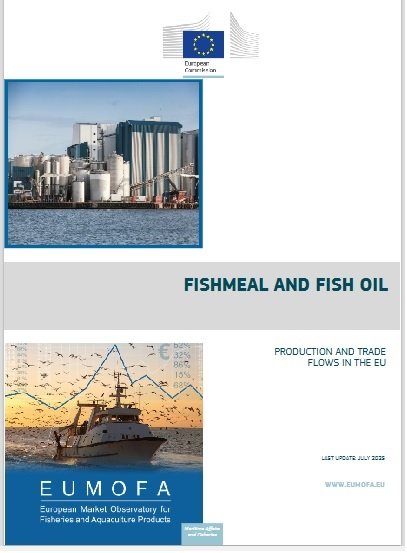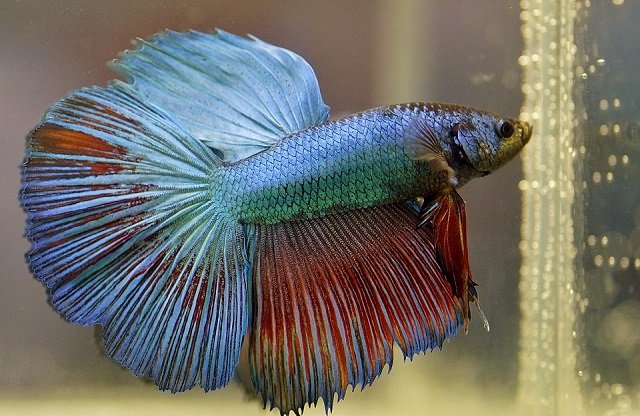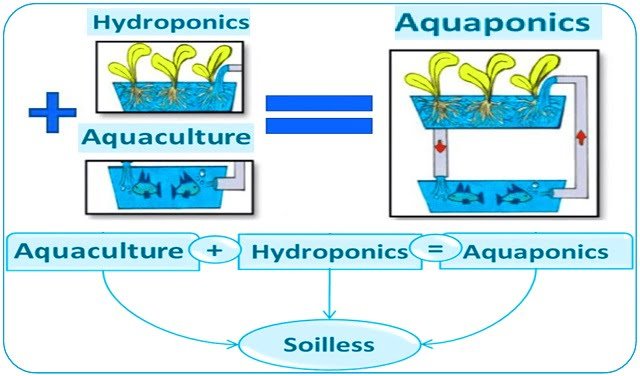
Fishmeal and fish oil are strategic cornerstones of aquaculture nutrition. However, their market is a complex ecosystem influenced by factors ranging from climatic events in South America to fisheries management policies in Europe. A recent report from the European Market Observatory for Fisheries and Aquaculture Products (EUMOFA) offers an in-depth analysis of this sector, revealing key trends in the production, trade, and use of these marine ingredients. This article breaks down the report’s most significant findings, focusing on the European Union’s (EU) position within the global context and the implications for the future of aquaculture.
Global overview: A stable market driven by aquaculture
- 1 Global overview: A stable market driven by aquaculture
- 2 The role of the European Union: A key but non-self-sufficient producer
- 3 The rise of by-products: A pillar of the circular economy
- 4 Who consumes fishmeal and fish oil?
- 5 Trade flows: The EU’s shifting partnerships
- 6 Outlook and future: Sustainability and new sources
- 7 Conclusion
- 8 Entradas relacionadas:
Over the last decade, the global production of fishmeal and fish oil has remained relatively stable, averaging 5.1 million tonnes of meal and 1.2 million tonnes of oil annually. This stability, however, masks important underlying dynamics.
Annual fluctuations are heavily dependent on forage fish stocks, particularly the Peruvian anchoveta, the world’s largest single-species fishery. Climatic phenomena such as El Niño can severely impact these catches, creating price volatility that reverberates globally. For instance, the 2023-2024 El Niño event caused a dramatic price surge, with Peruvian fish oil peaking at €6,138 per tonne in November 2023, compared to €2,780 per tonne in June 2022.
The role of the European Union: A key but non-self-sufficient producer
The European Union is a significant player on the global stage, contributing between 8% and 12% of the total fishmeal and fish oil production. Its output relies on small, oily, short-lived species like blue whiting, capelin, sandeel, and sprat, as well as an increasing use of trimmings from the processing industry.
- Denmark leads production: The country is by far the largest producer in the EU, accounting for 35% to 50% of the total. Its industry is sustained by significant quotas for key pelagic species. In 2023, Denmark was responsible for 83% of the EU’s landings for non-food purposes.
- Spain, the second-largest producer: Spain has established itself as the EU’s second-largest producer, representing 22% of the total fishmeal output in 2023. Unlike Denmark, its production is primarily based on utilizing by-products and trimmings from its robust fish processing industry.
- Dependence on imports: Despite its production levels, the EU is not self-sufficient and remains a net importer of fishmeal to meet its internal demand.
The rise of by-products: A pillar of the circular economy
Perhaps the most significant trend in recent years is the shift in raw materials. Historically, production was almost entirely dependent on whole fish catches. Today, the use of by-products—heads, skins, bones, and viscera—is essential for maintaining global supply stability.
According to the report, in 2023, by-products accounted for:
- 39% of global fishmeal production.
- 54% of global fish oil production.
This shift not only reduces waste and adds value to resources but also responds to stricter fisheries management and reduced quotas on forage fish. It is important to note that fishmeal from by-products has a different nutritional profile, generally being lower in protein but richer in minerals than that derived from whole fish.
Who consumes fishmeal and fish oil?
Aquaculture is undoubtedly the primary driver of demand for marine ingredients.
Stay Always Informed
Join our communities to instantly receive the most important news, reports, and analysis from the aquaculture industry.
- Fishmeal: In 2023, the aquaculture sector consumed an astonishing 92% of the world’s fishmeal. The main subsectors were crustaceans (23%), marine fish (20%), freshwater species (18%), and salmonids (16%). Geographically, Asia is the largest consumer, led by China (43% of the total). The use in pig feed, which stood at 25% in 2009, has plummeted to just 3% in 2023.
- Fish oil: Aquaculture also leads the consumption of fish oil, accounting for 63% of the total in 2023, although this figure has decreased from 81% in 2009. Salmonids (salmon and trout) are the largest consumers, utilizing 54% of the fish oil allocated to aquaculture due to their need for high levels of omega-3 fatty acids (EPA and DHA). The second most important and rapidly growing use is for direct human consumption (capsules and nutraceuticals).
Trade flows: The EU’s shifting partnerships
The EU’s trade balance reveals a clear trend: a reduced reliance on its traditional partners. The most dramatic change is seen in fishmeal imports from Peru, which were the main supplier in 2014 with a 41% share of the EU’s import market. By 2024, that figure had fallen to just 5%.
Today, the primary suppliers of fishmeal to the EU are Morocco, Norway, and South Africa. Regarding exports, the main destinations for the EU’s fishmeal and fish oil are Norway and the United Kingdom.
Outlook and future: Sustainability and new sources
The future of fishmeal and fish oil will be shaped by several factors. The study projects moderate production growth, driven mainly by the increased utilization of by-products from an expanding aquaculture industry. If all globally generated fishery by-products were utilized, fishmeal production could increase by 1.44 to 2 million tonnes.
However, significant challenges persist, such as climate change, which affects the distribution and abundance of fish stocks. To mitigate dependence on traditional fisheries, the industry is actively exploring alternative sources of protein and oils, such as microalgae, insects (e.g., black soldier fly larvae), and krill.
Conclusion
The EUMOFA report confirms that the fishmeal and fish oil market, while mature, is undergoing a profound transformation. The growing demand from an expanding aquaculture sector is being met through greater efficiency and a decisive pivot towards a circular economy, with by-products playing a central role. For the European Union, this entails a landscape of specialized domestic production and a reconfiguration of its trading partners. Innovation in alternative ingredients and sustainable fisheries management will be crucial to ensuring these valuable resources continue to nourish the aquaculture sector of the future.
Reference (open access):
EUMOFA. (2025, Julio). Fishmeal and fish oil: Production and trade flows in the EU. European Market Observatory for Fisheries and Aquaculture Products. 35 p.
Editor at the digital magazine AquaHoy. He holds a degree in Aquaculture Biology from the National University of Santa (UNS) and a Master’s degree in Science and Innovation Management from the Polytechnic University of Valencia, with postgraduate diplomas in Business Innovation and Innovation Management. He possesses extensive experience in the aquaculture and fisheries sector, having led the Fisheries Innovation Unit of the National Program for Innovation in Fisheries and Aquaculture (PNIPA). He has served as a senior consultant in technology watch, an innovation project formulator and advisor, and a lecturer at UNS. He is a member of the Peruvian College of Biologists and was recognized by the World Aquaculture Society (WAS) in 2016 for his contribution to aquaculture.




